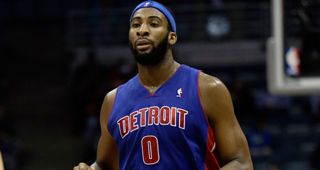Estimating how much cap space the NBA will have to spend next summer is a complicated question with a series of potential solutions.
In pursuit of this figure, Tom Ziller used revenue as the basis for his estimate while Keith Smith turned to a team-by-team approach, both of which have more than ample justification.
For this piece (and more generally on this topic, barring special circumstances), my preference is to use teams as the foundation. Evaluating each franchise’s potential capacity to spend and then aggregating it can give a useful number that helps to balance out some of the competing factors that could push the league-wide number too far one way or the other.
Under this approach, all guaranteed money counts unambiguously whether it comes in the form of existing contracts or waived players. Using a team-based estimate requires that foundation.
It gets more interesting when dealing with non-guaranteed or partially guaranteed contracts. Here, players with non-guaranteed seasons that are almost assuredly going to be picked up by their teams like Robert Covington count but decisions with less clarity lean towards clearing the space. That pushes the aggregate number a little higher but should better reflect decision-making with cap space looming for so many teams. Similarly, player options that are closer to definite one way or the other had that taken into account while the rest largely went towards opting out. The combination of large amounts of money on the open market and players’ desire for long-term security make that a reasonable assumption at this time.
Restricted free agents with qualifying offers and cap holds pose some of the most interesting problems. For example, Andre Drummond has a modest cap hold of about $8.2 million but assuredly will make more than that whether it comes from a deal directly with the Detroit Pistons or an offer sheet they match. That said, Detroit can wield that low hold to their advantage by signing other players and then using his Bird rights to go over the salary cap as the San Antonio Spurs did with Kawhi Leonard in July 2015.
As such, giving a single number for Drummond proves challenging. Using the cap hold for players like Drummond and Bradley Beal balances the possibility of filling the books and then going over with the meaningful chance their teams end up not squeezing everything out of that extra space.
The severity of the cap spike takes the complication of whether teams will function over the cap by choice out of the equation for the most part. In certain circumstances most offseasons, franchises do this for all or part of their summer but that can only occur when their combination of salaries, exceptions and cap holds for players still on their books (active and inactive in many cases) can push them over the line.
In 2016, the salary cap increase will be so large that most teams could not get over at the start of the summer even if they tried. However, the space estimate of the Cleveland Cavaliers is the Taxpayer Mid-Level Exception because that and minimum deals will be their new spending limit beyond potential use of their trade exceptions.
From there, the other major difference-maker comes at the league level rather than the team level. Each first round pick carries a cap hold until they are signed, renounced or agree not to play in the NBA for a given season. The combined cap holds for the 2016 Draft’s first round picks add up to about $60 million and while some previously drafted players will come over on rookie scale deals (Dario Saric may be the most prominent), some picks in 2016 will play elsewhere so those forces should balance reasonably well.
That process puts the league wide estimate over $950 million originally and it dipped slightly after players like John Henson agreed to extensions at 2016-17 salaries over their cap holds. However, it is also worth remembering that the final cap number has gone over the estimates from a year ahead each of the last few summers and that should be the case again after this season and this projection uses the $92 million cap estimate to push the total even closer to $1 billion. Even a small uptick beyond that reverberates for almost every team and ratchets up this league-wide number substantially.
While there are a series of different methods to generate a fair estimate of how much money will be out there in July 2016, $1 billion works well as an approximation for the time being and we should not lose sight of how staggeringly large that number is for the NBA and the league’s structure moving forward.



